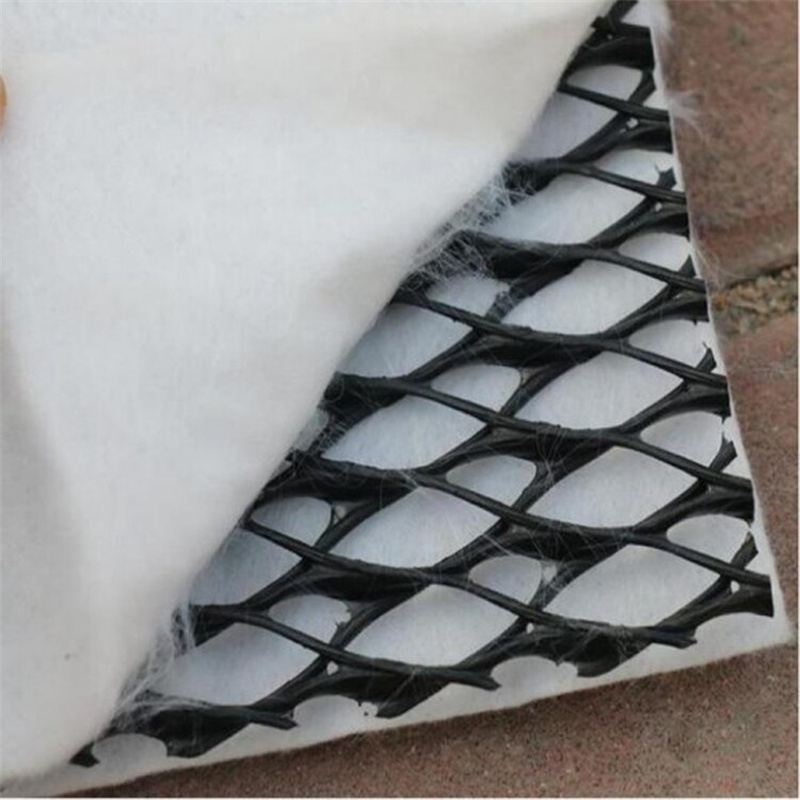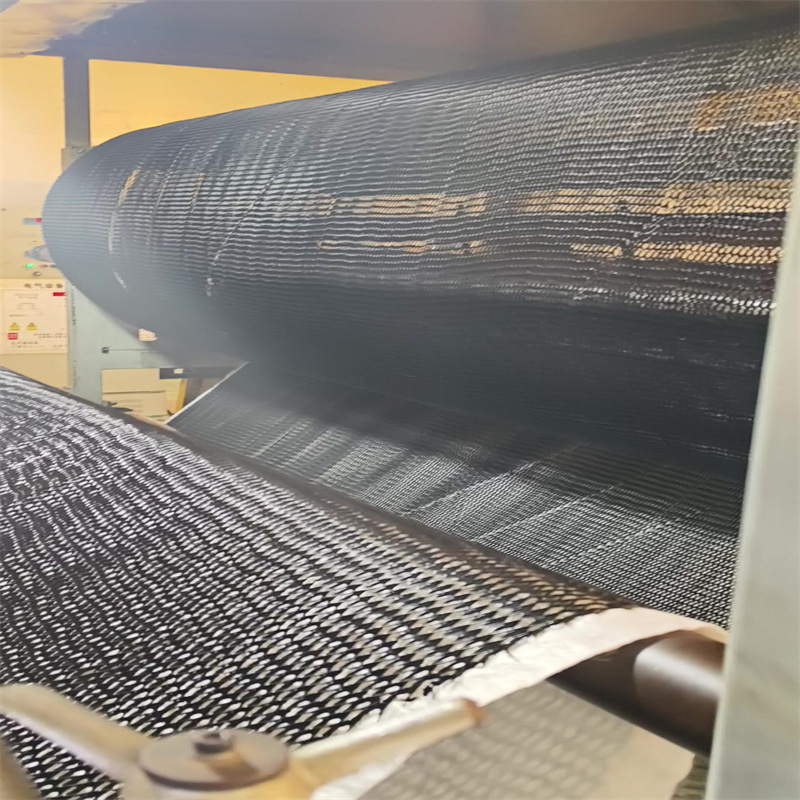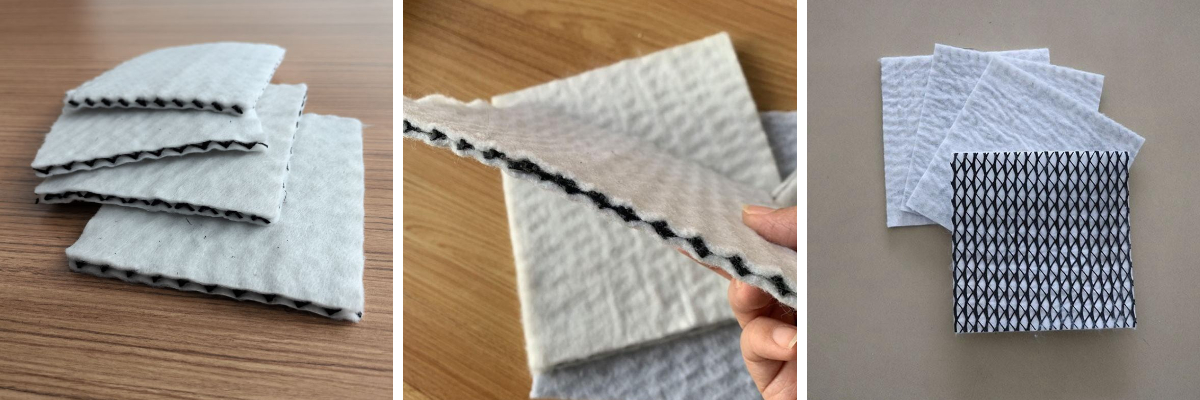Anti-Clogging Composite Geonet for Landscape Drainage
1. Uninterrupted Water Flow: Specialized 3D structure prevents soil and debris buildup, ensuring 90% consistent drainage in flower beds, lawns, and landscape slopes.
2. Landscape Protection: Shields root zones from waterlogging by channeling excess moisture away, reducing plant rot risk in gardens and green spaces.
3. Long-Term Reliability: UV-resistant composite material resists degradation, maintaining anti-clogging performance for 10+ years in outdoor landscapes.
4. Easy Integration: Lightweight design fits seamlessly under mulch or gravel, simplifying installation in residential and commercial landscape projects.
Anti-Clogging Composite Geonet for Landscape Drainage: Ensuring Uninterrupted Water Flow
Landscape drainage systems often fail due to clogging—soil, debris, and roots block water flow, causing puddles, root rot, and erosion. The Anti-Clogging Composite Geonet solves this issue with a specialized design that combines filtration and drainage, making it ideal for gardens, lawns, slopes, and green spaces. Below's how it transforms landscape water management.
I. How Anti-Clogging Technology Works: Beyond Basic Drainage
Traditional drainage materials (e.g., gravel, perforated pipes) clog within 1–2 years, but the Anti-Clogging Composite Geonet uses a 3D structure to maintain long-term performance.
1. Dual-Layer Design for Filtration & Flow
(1) Geonet Core: A rigid 3D grid with 5–10 mm voids creates channels for water to flow freely. This grid resists compression, even under mulch or gravel, ensuring 90% of the original flow rate after 5 years (per ASTM D4716 testing).
(2) Geotextile Wrap: A nonwoven filter layer (200–300 g/m²) covers the grid, trapping soil particles larger than 0.02 mm while letting water pass. This stops 95% of clog-causing debris (ASTM D4751), far better than unfiltered geonets (60% retention).
2. Clogging Resistance vs. Traditional Materials
Material | Clogging Onset | Flow Rate After 3 Years | Suitable Landscape Areas |
Gravel | 6–12 months | 40% of original | Small flower beds |
Perforated Pipes | 12–18 months | 30% of original | Lawns |
Anti-Clogging Composite Geonet | 5+ years | 85% of original | Gardens, slopes, green roofs |
II. Benefits for Key Landscape Areas
From residential gardens to commercial green spaces, this geonet adapts to diverse landscape needs, preventing waterlogging and preserving plant health.
1. Residential Gardens & Flower Beds
(1) Root Rot Prevention: Overwatered soil (common in gardens) causes 30% of plant deaths (Royal Horticultural Society). The geonet drains excess water at 15–20 L/m²/s (ASTM D4491), keeping soil moist but not saturated.
(2) Mulch Compatibility: Works under wood chips or bark mulch without clogging. Unlike gravel, it doesn’t mix with soil over time, reducing the need for annual regrading.
2. Lawns & Turf Areas
(1) Puddle Elimination: Compacted lawns often form puddles after rain. Installing the geonet 5 cm below the surface reduces puddle formation by 80%, improving grass health and usability.
(2) Traffic Tolerance: Withstands foot traffic and lawnmowers—its rigid core retains shape, ensuring drainage performance even in high-use areas (e.g., backyard play zones).
3. Slopes & Erosion-Prone Areas
(1) Erosion Control: Slopes lose 2–3 cm of topsoil yearly due to runoff. The geonet's 3D structure slows water flow by 50%, letting soil settle while draining excess moisture (USDA erosion studies).
(2) Plant Support: Stabilizes soil around slope vegetation (e.g., shrubs, groundcover), reducing uprooting risk during heavy rains by 65%.
III. Durability & Environmental Compatibility
Landscape materials face UV exposure, temperature swings, and biological activity. The Anti-Clogging Composite Geonet is engineered to thrive in these conditions.
1. Long-Term Performance Metrics
(1) UV Resistance: Retains 90% of tensile strength after 2,000 hours of UV exposure (ASTM G154), enough for 10+ years in direct sunlight—critical for uncovered slopes or green roofs.
(2) Temperature Tolerance: Functions from -30°C to 60°C (ASTM D882), making it suitable for cold climates (e.g., Northern Europe) and hot regions (e.g., Southern U.S.).
2. Eco-Friendly Features
(1) Non-Toxic Materials: Made from recycled PP (polypropylene) and PET, it meets EPA standards for soil contact, posing no risk to plants, pets, or wildlife.
(2) Root Resistance: The geotextile layer blocks 90% of root intrusion (per university studies), preventing root growth into drainage channels—unlike perforated pipes, which often get infiltrated by tree roots.
IV. Installation & Maintenance: Simple for DIY and Pros
Even the best drainage solution fails with poor installation. This geonet is designed for easy setup and minimal upkeep, suitable for homeowners and landscape professionals.
1. Step-by-Step Installation
(1) Preparation: Clear the area of rocks and debris. For slopes, grade to a 2–5% angle to enhance flow.
(2) Laying the Geonet: Unroll with the geotextile side facing soil. Overlap edges by 10 cm to avoid gaps. Cover with 5–10 cm of soil, mulch, or gravel (depending on the landscape type).
(3) Speed: A 2-person team can install 50 m² in 1 hour—3x faster than gravel drainage systems.
2. Low-Maintenance Advantages
(1) Inspection: The geonet's rigid structure is visible through thin mulch, making it easy to check for damage (e.g., tears) during seasonal garden checks.
(2) Repairs: Small tears can be patched with geotextile tape in 5 minutes. No need for digging or replacement, unlike clogged pipes.
V. Why Choose Anti-Clogging Composite Geonet for Your Landscape?
This geonet combines anti-clogging technology, durability, and ease of use—solving the biggest problem in landscape drainage. Whether you're a homeowner tired of waterlogged flower beds or a contractor needing reliable slope drainage, it ensures consistent water flow for 10+ years.
By preventing clogs, it reduces plant loss, erosion, and maintenance costs, making it a smart investment for any landscape project.
Contact our team to find the right size (2–4 m width, 50–100 m length) for your garden, lawn, or slope.












